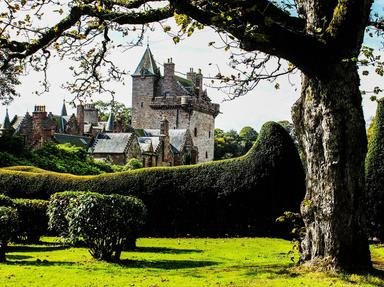Quiz Answer Key and Fun Facts
1. During the debates on the Bill of Union between Scotland and England in 1706-1707, which opponent of Union earned himself the nickname "The Patriot"?
2. In the years after the accession of George I to the throne, Scottish Jacobites sought the restoration of the Stuart dynasty through rebellions in 1715, 1719 and 1745. Which Scottish noble led the first of these?
3. Which improvement to Newcomen's steam engine, which made it more efficient, did James Watt invent in the 1760s?
4. Which building on the Ayrshire coast was rebuilt by Robert Adam between 1777 and 1792 as a spectacular country house for the Earl of Cassilis?
5. Where in Scotland did David Dale, the cotton merchant and manufacturer, set up a cotton mill in 1786 which became world famous for its treatment of workers and their families under the management of the Welshman Robert Owen?
6. In the eighteenth century Edinburgh became such a centre of learning that it became known as the Athens of the North. Which philosopher, based in the city, published his "Treatise of Human Nature" in 1739 and 1740 and his "Essays, Moral and Political" over the following two years?
7. Which engineer, born in Dumfriesshire in 1757, became so famous as a transport engineer that he gained the nickname "The Colossus of Roads"?
8. Robert Burns, the "Ploughman Poet", is regarded as Scotland's national bard. For a time, he also held an official post. Which one?
9. Which English man of letters made a tour of the western isles of Scotland in 1773?
10. Buchanan Street, Glassford Street and Ingram Street in Glasgow were all named after which group of 18th century businessmen?
Source: Author
Quizaddict1
This quiz was reviewed by FunTrivia editor
bloomsby before going online.
Any errors found in FunTrivia content are routinely corrected through our feedback system.

